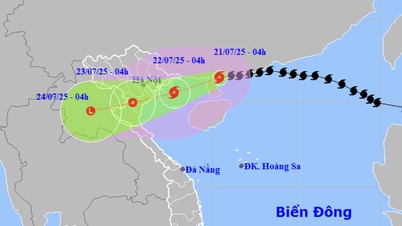Psoriasis is a chronic disease that causes a rash with itchy, scaly patches mainly on the knees, elbows, trunk and scalp, and can occur at any age.
Dr. Dang Thi Ngoc Bich, a dermatologist and skin specialist at Tam Anh General Hospital in Ho Chi Minh City, said that psoriasis is a type of skin that peels off and forms scales. The lesions are pink or red, or even purple or dark brown. The scales can be gray, white or silver. These patches can appear anywhere on the body, but are most common on the elbows, knees, scalp and lower back.
Psoriasis is a chronic non-contagious disease that can occur at any age but usually appears in people aged 20-30 and 50-60, with equal proportions between men and women. Most people with psoriasis are only affected by small patches on the skin, but in some cases, the psoriasis patches can be itchy or painful.
Common signs and symptoms of psoriasis include a patchy rash that can range from dandruff-like scaly patches to large, full-body rashes. In people with brown or black skin, the rash is often purple. In fair-skinned people, it is pink or red with silvery scales. Psoriasis causes dry, cracked, itchy, burning skin that may bleed or be painful. In children, the patches may be smaller than in adults. The rash occurs in cycles, flare-ups lasting weeks or months and then subside.

Psoriasis patient. Photo: Freepik
According to Dr. Dang Thi Ngoc Bich, psoriasis is divided into clinical forms including common psoriasis, guttate psoriasis, small plaque psoriasis, inverse psoriasis, erythrodermic psoriasis, pustular psoriasis, seborrheic psoriasis, diaper psoriasis, and psoriatic arthritis.
Plaque psoriasis (vulgar psoriasis) accounts for the majority of cases. Psoriasis usually appears as red patches with white scales on the back of the forearms, lower legs, navel, and scalp. It causes dry, itchy, raised patches of skin (plaques) covered with scales. The patches vary in color, depending on skin color.
Guttate psoriasis is characterized by small, scaly, teardrop-shaped lesions on the trunk, arms, or legs. It occurs primarily in young adults and children. It is often triggered by a bacterial infection such as strep throat. Guttate psoriasis is often triggered by a streptococcal infection (oropharyngeal or perianal) and usually occurs 1-3 weeks after the infection. It is most common in children and young adults.
Pustular psoriasis (rare) presents as small, non-infectious, pus-filled blisters that form clear pus-filled blisters. Psoriasis may be widespread or on small areas of the palms of the hands or soles of the feet.
Inverse psoriasis (inverse psoriasis, pruritic psoriasis) forms red patches in the folds of the skin (groin, buttocks, breasts, around the genitals). Temperature, trauma, and infection play a role in the development of this atypical form of psoriasis. Sufferers develop smooth, inflamed patches of skin that are made worse by friction and sweating.
Erythrodermic psoriasis (less common) occurs when the rash is widespread and can develop from any other type of psoriasis. It usually involves more than 90% of the body's surface area. The skin may be dry, itchy, swollen, and severely painful. Erythrodermic psoriasis covers the entire body with a flaky rash that can itch or burn intensely. It can be short-lived (acute) or long-term (chronic).
Nail psoriasis causes pitting, abnormal nail growth, and discoloration of the fingernails and toenails. Nails with psoriasis can loosen and separate from the nail bed (onychomycosis), and in more severe cases, the nails can crumble.
Infantile psoriasis (diaper psoriasis) is characterized by the appearance of red papules with silvery scales in the diaper area of infants, which may extend to the trunk or limbs.
Oral psoriasis (very rare) may be asymptomatic, appearing as white or grayish-yellow patches. Fissured tongue is the most common finding in people with oral psoriasis.
Seborrheic psoriasis typically presents as red, scaly patches in areas that produce a lot of sebum, such as the scalp, forehead, skin folds next to the nose, skin around the mouth, skin on the chest above the sternum, and skin folds.
Nguyen Van
Source link




























![[Photo] National Assembly Chairman Tran Thanh Man visits Vietnamese Heroic Mother Ta Thi Tran](https://vphoto.vietnam.vn/thumb/1200x675/vietnam/resource/IMAGE/2025/7/20/765c0bd057dd44ad83ab89fe0255b783)





































































Comment (0)